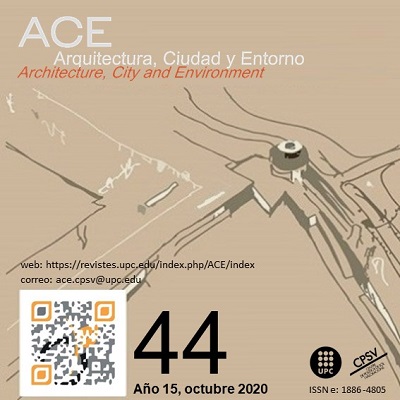Determination of Quality Criteria of Urban Pedestrian Spaces
DOI:
https://doi.org/10.5821/ace.15.44.9297Keywords:
Public space, pedestrianization, factor analysis, pedestrian designAbstract
Pedestrian spaces are important public spaces that promote, support, and improve urban public life. Generally, these spaces are created by pedestrianizing existing streets, squares, plazas, and so forth as part of overall planning. Today, such an approach is considered an important urban strategy. One of the aims of pedestrianization is to clear certain areas from vehicular traffic in order to transform them into unconstrained and safe environments. Another purpose of pedestrianization is to improve mixed-use areas to ensure better performance of their functions. This study aims to determine the quality criteria that one should take into account while creating and managing pedestrian spaces and to measure the quality level of downtown Ankara's oldest and most used nine streets. For this purpose, a two-stage questionnaire, consisting of 22 questions, was conducted. The questions were collected from related literature and similar research. The data obtained in the first stage were evaluated by factor analysis, which is a quantitative method. The findings showed that the quality criteria were grouped into five main factors: design, maintenance, activities, accessibility, and safety. The data obtained in the second stage revealed the extent that the streets in the study area met these criteria. The study’s findings revealed that the streets with the highest quality level were İzmir and Yüksel streets, and the street with the lowest quality level was Bayındır Street. The research determined the pedestrian space quality criteria in general and the strengths and weaknesses of the study area in particular. The results are a guide for planners, designers, managers, and policymakers who are engaged in developing existing spaces and creating new ones.
Published
Issue
Section
License
| INTELECTUAL PROTECTION CRITERIA |
At this moment, it is count with the "Oficina Española de Patentes y Marcas", while global protection it is being processed by the World Intelectual Property Organization (OMPI/WIPO). Nevertheless the International Standard Serial Number Office (ISSN) has given the following numbers ISSN: 1886-4805 (electronic version) and 1887-7052 (paper version). All articles will be peer reviewed, using double blind reviewing. |
| COPYRIGHT |
The article contents and their comments are authors exclusive liability, and do not reflect necessarily the journal editor commitee's opinion. All ACE published works are subject to the following licence CC BY-NC-ND 3.0 ES http://creativecommons.org/licenses/by-nc-nd/3.0/es/ It implies that authors do not hold nor retain the copyright without restrictions but only those included in the licence. |





































